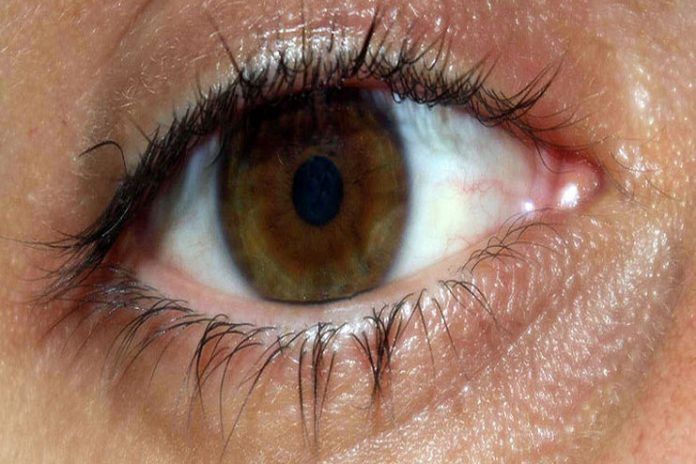Affiliate Disclaimer
Some links in this article are affiliate links. We may earn a small commission if you make a purchase through these links, at no extra cost to you. We only recommend products we find useful to our readersMany changes in the body gradually begin show up with the progress of the age. Such changes may be a cause of annoyance many times. Eye floaters also fall under this category, which is a bothersome issue that is common in people aged more than 50. Many try to ignore eye floaters until they become more prominent.
In fact, eye floaters can be distracting at the beginning, but eventually tend to “settle” at the bottom of the eye, becoming less bothersome. However, they are not be ignored at times. Read on to learn about the symptoms, causes, and treatment for eye floaters.
What Are Eye Floaters?
Eye floaters are specks or cobwebs that float in the eye, particularly in the field of vision. These floaters look like thread-like strands, spots or squiggly lines in dark, small, shadow shapes. Most floaters move with your eye-movement. Eye floaters drift when your eyes stop moving.
Symptoms of Eye Floaters:
- Small shapes in your vision
- Appearance of dark specks or knobby, transparent strings
- Moving spots while moving eyes
- Spots are noticeable when you gaze at a plain bright background
-
Small strings that eventually settle down

What Are The Causes For Eye Floaters?
Floaters occur when the vitreous, a gel-like substance shrinks, it mostly happens with the age. Ideally, the substance fills 80% of the eye and helps maintain round shape. But when the vitreous shrinkage happens, tiny shadows can be casted on the strands of the retina, which are called floaters. The floaters tend to settle below the line of sight, making them less bothersome.
Other causes of floaters include:
- Inflammation (uveitis)
- Infection
- Retinal Tears
- Hemorrhaging
- Eye injury
- Age more than 50
- Nearsightedness
- Diabetic retinopathy
- Eye trauma
-
Eye inflammation
Thus, aged people, people with nearsightedness, diabetic patients, or who had a cataract operation are at increased risk of developing eye floaters.
Inflammation in the layers of the uvea in the back of the eye is called posterior uveitis. This condition causes the inflammatory debris release into the vitreous, which are the resulting floaters. The condition can be caused due to some inflammation or infection.
Hypertension, diabetes, blocked blood vessels and injuries can cause bleeding into the vitreous. The bleeding into the vitreous can cause the cells to become floaters.
Sometimes, retinal tears can cause floaters. When a sagging vitreous tugs on the retina and enough force is applied to tear it, retinal tear occurs, which may lead to retinal detachment.
Air bubbles are formed when some medications are injected into the vitreous. These bubbles are seen as shadows until eye absorbs them. Silicone oil bubbles are added into the vitreous that can be seen as floaters.
What Causes Eye Flashes?
Retina gets stimulated by the eye entering your eyes, which produces an electrical impulse and the optic nerve transmits it to the brain. When the brain interprets this impulse as light or some image type. This results in an eye flash. Impulse can be interpreted as a flicker of light when the retina is mechanically stimulated, as a similar electrical impulse is sent to the brain.
- Also, the flicker or flash of light is noticed when the retina is tugged, detached or torn from the back of the eye. These flashes may be short-lived or may continue for indefinite periods depending on the extent of the traction.
- A blow to the head may also cause photopsias/flashes due to the vitreous shrinkage inside the eye. The phenomenon may be called ”seeing stars”.
-
Blood vessel spasms in the brain may also cause flashes that are of jagged lines or heat waves in both the eyes. They may or may not be accompanied by the migraine headache.
Complications Of Eye Floaters
Complications that are associated with eye floaters may require treatment. Possible complications include:
1. Vitreous Detachment:
Vitreous detachment is the condition where several new floaters begin to appear all of a sudden. This happens when a section of the vitreous pulls the retinal fine fibers all at once, and not gradually. Many times, it is not threatening to vision.

2. Retinal Detachment With Floaters:
A serious condition, retinal detachment may be the extreme condition of eye floaters and require immediate treatment as may cause visual impairment and even eye
Visit your eye care professional if you experience,
- Light in peripheral vision
- Increase in floaters
-
Light flashes
Your doctor will conduct a complete eye exam for eye dilation to check the back of your eyes and the vitreous. Then they determine the cause of the floaters.
How To Treat Eye Floaters?
Most of the times, no treatment is needed for eye floaters, even though they are annoying. In cases where the floaters are dense, and numerous, the vision may get affected, and vitrectomy is required. However, the surgery may be referred only if the floaters cause serious problem to the vision.
- A surgical procedure, vitrectomy removes floaters from the vitreous, by removing the vitreous gel and the floating debris from the eye.
- A solution replaces vitreous, which is most watery. No change could noticed even after the surgery.
- However, possible complications can make the operation risky. They include retinal tears, retinal detachment, and cataract
- Alternatively, the opthamologist may use the laser to disrupt the floaters. The special laser may break them and make less noticeable.
- This treatment may disrupt is known to improve vision.
-
Risks linked to the laser treatment may include damage to the retina if aimed incorrectly.

What To Expect From Laser Treatment?
Laser vitreolysis is pain-free and done at the ophthalmologist’s office.
Anesthetic eye drops are applied just before the treatment.
A special contact lens is placed on the eye.
Using a biomicroscope (slit lamp) the laser energy is precisely delivered to the floaters being treated.
- Dark spots might be noticed during the procedure.
- Do not worry, they are just the pieces of broken up floaters.
- It may typically take half an hour for the treatment to finish.
- Once the procedure ends, the contact lens are removed.
- Saline is used to rinse the eye and then anti-inflammatory drops are applied.
- Doctor may prescribe more eye drops to use at home.
- If you see dark spots soon after the treatment, do not worry as they are little gas bubble that tend to resolve immediately.
- The patient may also expect mild discomfort, blurry vision, or redness soon after the procedure. They are common, non harmful effects, which do not allow you to return to normal activities following laser vitreolysis.
- A follow-up may be scheduled the next day when the second treatment is needed.
- The ophthalmologist will evaluate the shape and borders of your eye floaters.
-
Those with “soft” borders and sizable floaters that appear suddenly as a result of a posterior vitreous detachment often can be successfully treated with the laser procedure.
Thus, laser vitreolysis could be a good treatment option for your situation.
When Are Eye Floaters And Flashes A Medical Emergency?
A shower of floaters and spots àccompanied by light flashes require immediate medical attention. A sudden appearance of the eye floaters symptoms means the vitreous is pulling away from the retina (posterior vitreous detachment). Also, it could mean the dislodging of the retina from the back of the lining of the inner eye. Torn retina might cause a hole or small tear, leading to retinal detachment.
Studies published in Ophthalmology revealed that 39.7% people with posterior vitreous detachments (PVDs) have experienced the sudden symptoms of eye floaters and/or light flashes, while 8.9% had a torn retina. Research also indicates that up to 50% people with a retinal tear will subsequently develop a retinal detachment.
PVDs are common compared to retinal detachments and often are not an emergency like floaters’ sudden appearance. The light flashes may appear as lightning bolts, flickering lights or random sparks.
Tips Or Home Remedies For Eye Floaters:
- Simply relax and let your strained or tired eyes rest.
- Good rest can make the difference.
- Close eyes and gently massage your temples.
- Cover yours with a warm cloth.
- Generate heat in your palms by rubbing them together and put over the eyelids.
- Practice eye exercises like rolling eyes in circular motions in clockwise and counter-clockwise.
- Hold some object in front of your eyes as far as possible and focus on it.
- Bring the object closer and farther a few times.
- Cut down on your screen time.
- Help detox your body by drinking plenty of water and avoid toxin accumulation.
- Free-radical damage can be stopped by foods rich in antioxidants. So include foods like pomegranate, blueberries, kale, strawberries, and oranges.
- Get out of daily stress by practicing yoga and meditation, which can help you rest.
- Wear sunglasses from harmful UV rays. Most essentially, ensure to get enough sleep and avoid much strain to the eyes.
In conclusion, an eye is the most sensitive organ of the entire body and deserves much attention. Even a simple and common issue like eye floaters, it has to be dealt with utmost care. Keep reading our HealthSpectra posts to be informed. Live life love life!
In this Article
















